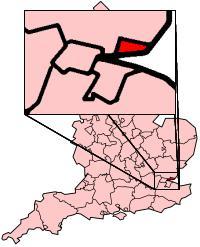February 12 and particularly 15th.
March 7, 10 and 24 (minor events).
April 1-2 heavy, but short showers.
April 10 extensive rain.
May 14, 16, 20, 22 and 25 (20th and 25th extensive).
May 26, 27, 29, 30 (minor events).
June 13, 14, 15, 21 (minor events).
June 26 extensive rain.
July 5 heavy but short shower.
July 7,9,11, and 22, August 1 and 7 (minor events).
August 13 finally have significant rain.
August 17 extensive rain (minor on 21st).
August 23-24 extensive rain (minor on 26th).
August 28 extensive (minor on Sept 1st).
September 13 extensive rain.
September 22 short heavy shower.
Essex Radio had a program earlier in the week on the subsidence caused by tree roots dehydrating the London Clay terrain in southern Essex this summer. More sandy substrates do not subside in this way but during wetter years, particularly winters when the deciduous trees are not extracting water in this way; they produce springs and slumps at the junction with the London Clay. Presumably having minor sand or silt layers within the London Clay itself has the dual effect of producing a slightly steeper, stronger slope below the dwellings, and a route for tree roots to extract water from the interbedded clays in a dry summer. The tendency to cover Essex with buildings and parking lots, rather than gardens, is encouraged by insurance companies faced with subsidence claims. This in turn reduces the ability of water to wet the subsoil rather than run off down the road, drains rivers and into the sea in a few hours. During wetter weather this rapid exit of the water itself causes problems for property owners living near rivers which cannot hold the increased water supply, often supplied in short thunder storms and a flash flood. Given a larger slope with London Clay below sands or natural streams one can observe major slumps such as the Southend Bandstand visited on May 10.
Southend Bandstand - major slump of London Clay

London Clay drainage problems, Southend-on-Sea. London Clay slope opposite a river liable to flash flooding along its new concrete channel (below railings on left). Also shows a continuous spring-line above the opposite sidewalk (red warning signs behind cars) apparently from a sandy layer with the London Clay. The finer laminated clays and septaria of the Beaver Tower bed occur below it and reach the sidewalk beside the white car (5th from right). After rain the water exits about one metre up the traditional garden paths in the middle of the photograph.


Map showing Southend England.

No comments:
Post a Comment